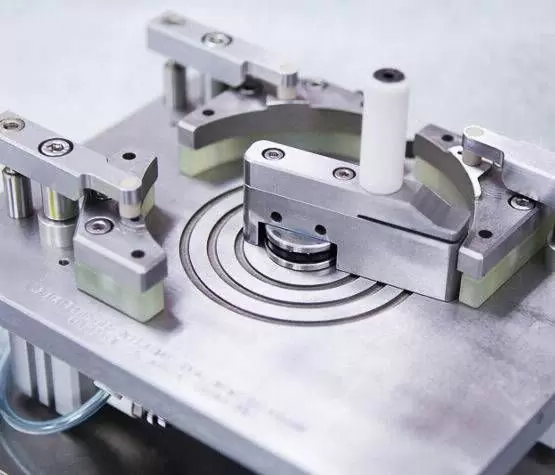Jigs and fixtures are two important tools used in CNC machining for stability, security and support. Both set of tools have unique yet diverse applications, and are often confused with one another. In this article, we look at both jigs and fixtures, their applications, differences and when to use what. Let’s get right into it.
What is a Jig?
A jig is a device that is used to direct, secure or guide a machine part or machine tool during CNC operations. Jigs are usually attached to the machine table, where it guides the positioning and motion of the tool during drilling, boring or milling operations.

There are various types of jigs that serve different functions in machining operations. The most common types of jigs include:
• Template jigs

• Leaf jigs

• Angle-plate jigs

• Plate jigs

What is a Fixture?
A fixture is also a CNC machine tool that is used to secure or hold a workpiece firmly on a CNC machine. It serves as a media for stability, positioning and support during milling, turning, grinding and other CNC operations. Unlike jigs, fixtures, however, does not have the ability to guide or direct the cutting tool.

There are also many types of fixtures for various CNC machine applications. Fixtures can be grouped according to function, power source and CNC machining operation. See below a list of fixtures based on CNC operations:
• Drilling fixtures
• Milling fixtures
• Grinding fixtures
• Boring fixtures
• Turning fixtures
Jigs vs Fixtures – Key differences
Because jigs and fixtures may have some overlapping functions, both tools can be very confusing to beginner CNC machinists. Below are the major differences between jigs and fixtures:
• Primary function
Jigs are mobile. They secure and direct a machine cutting tool to work at a particular position on the material / workpiece. Fixtures, on the other hand, only secures and supports the workpiece to withstand the cutting, drilling or boring operation of the machine.
• Design
Jigs usually have more complex designs than fixtures. They also weigh lesser than fixtures as they primarily secure tools. Fixtures have less complex designs but are heavier than jigs as they must withstand high vibrations and cutting force from the machine tool.
• Tool interaction
Fixtures do not come in contact with tools. They also do not need to interact with the machine part since their primary function is to secure the workpiece. In contrast, jigs must come in contact with the tool to direct, guide, angle and position them for high precision and accuracy.
• Ease of use
Jigs are generally easier to use than fixtures. When improperly used, fixtures can damage workpieces or result in safety hazards in the machine floor.
• Security
Fixtures must be clamped or secured with additional accessories for improved functionality and stability during operations. Jigs can be held or affixed to the work table depending on what machining operation is required.
Jigs and Fixtures in CNC machining
The most basic CNC machine operations often employ both jigs and fixtures for stability and security. Because of the diverse designs of this tools, they serve many applications in the common CNC manufacturing operations. Here are some of the advantages of using jigs and fixtures in CNC machine operations:
• Safety
Jigs and fixtures improve the overall safety of a CNC machine operation by securing tools and workpieces firmly. This reduces the chances of breaks, falls, deflections and more. They also help reduce the risk of human injuries by lowering the amount of interactions that humans have with moving parts when manufacturing.
• Job quality
Jigs and fixtures help to secure the workpiece, and guide the motion and angle of the tool to ensure that more secure and more precise cuts are made. These tools also ensure high consistency and repeatability of CNC operations because of their ability to assist in part alignment, positioning, measuring and punching without human error.
• Quicker leadtimes
Jigs and fixtures increase the chances of getting it right the first time, thereby reducing the leadtimes that may come from re-runs. Also, these two tools eliminate allow for the running of your CNC machine at higher depth of cuts, speed and feed rates because of improved security of the workpiece. They also cut down on the idle time of the machine by eliminating the need for manual marking, positioning and re-alignment.
• Complex machining
Jigs and fixtures facilitate the machining of parts with complex shapes and geometries, as tools and workpieces can be manipulated accurately across different angles and directions. With jigs and fixtures, one or more tool can also be simultaneously used on a workpiece without error.









